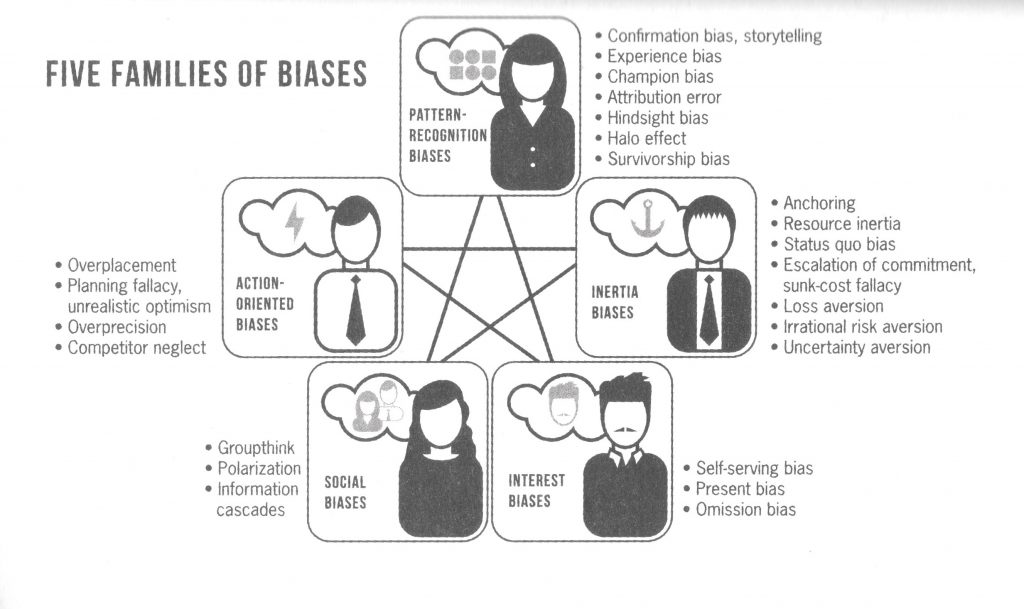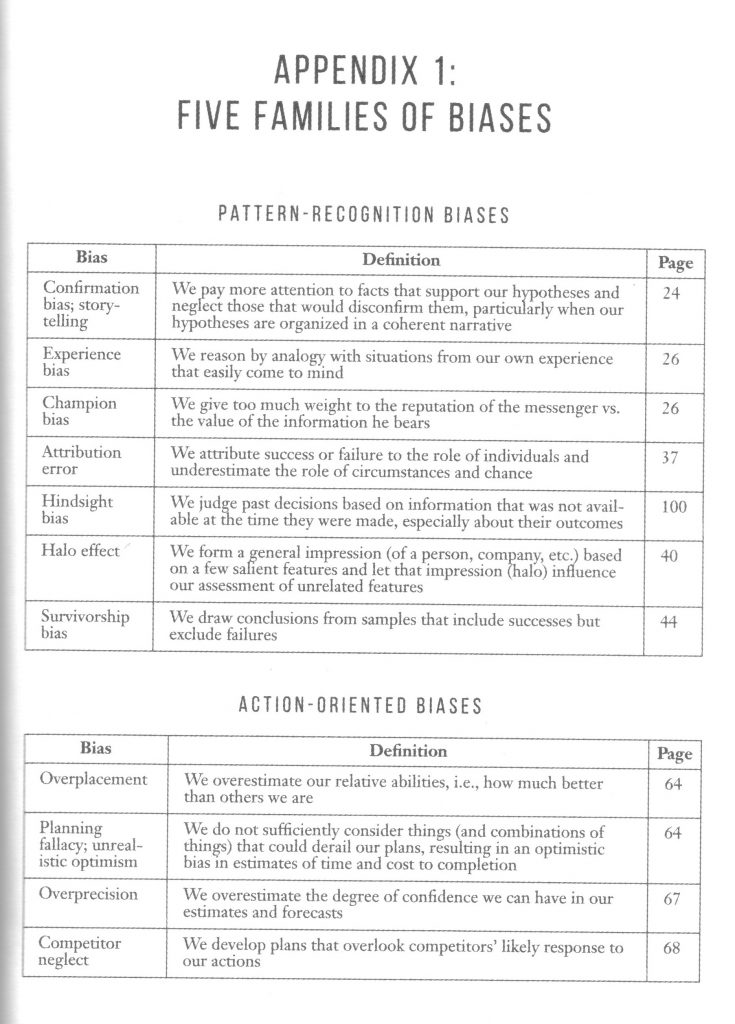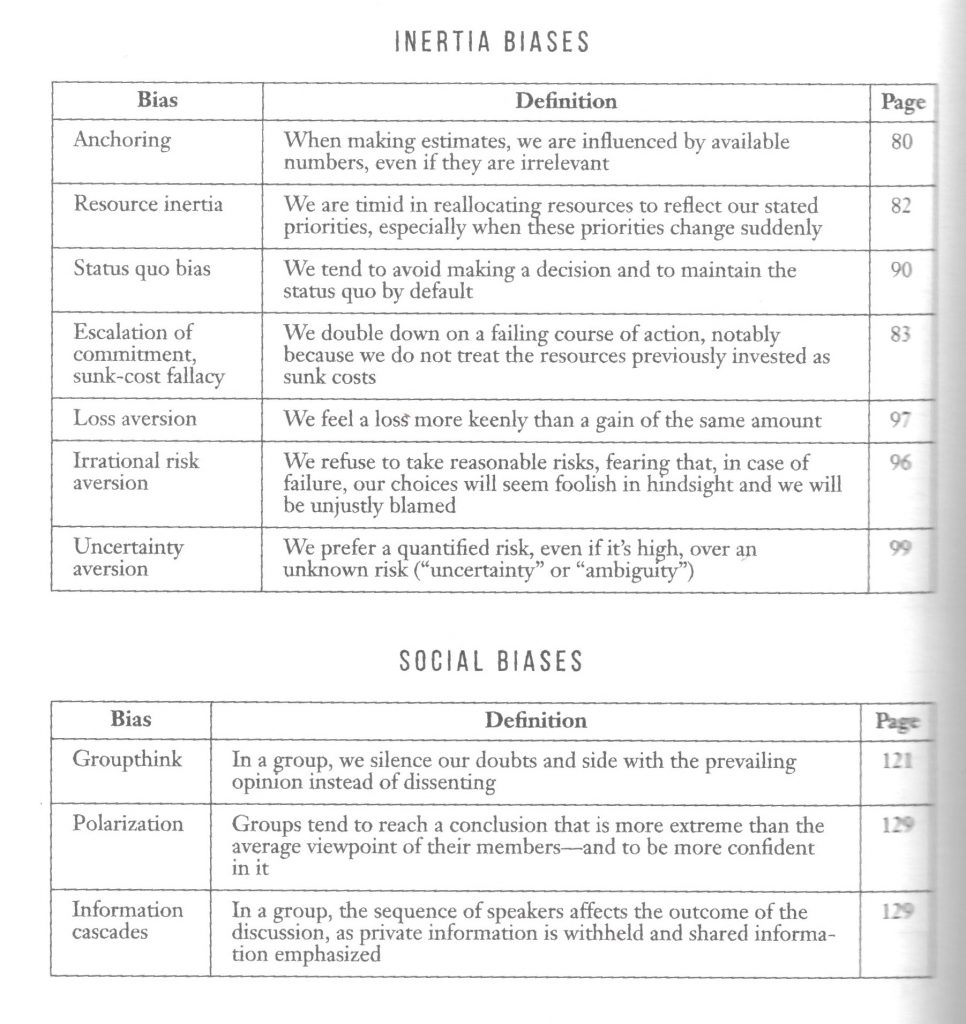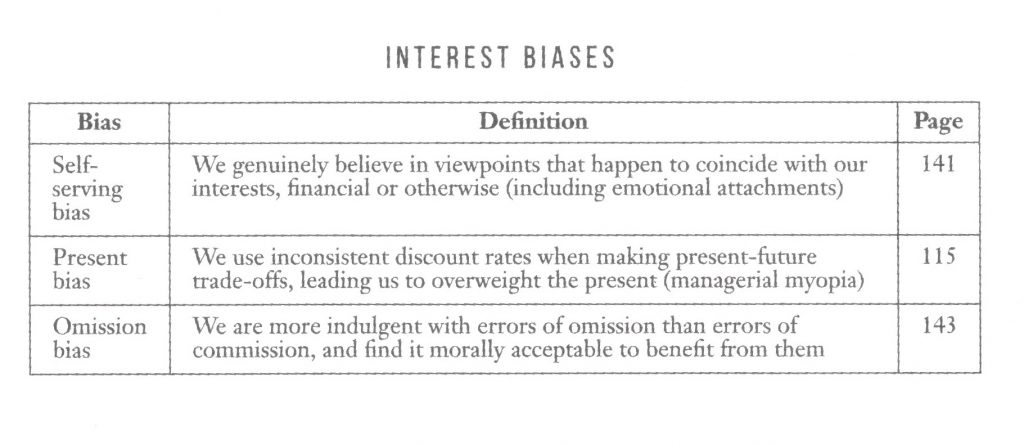The one sentence summary
You can fight the biases that distort decision-making by learning to recognize them and using a range of techniques.
Can’t be bothered to read it? Too much screen time lately? Listen to the podcast in two parts.
WHAT THE BOOK SAYS 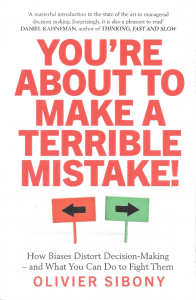
- Even the smartest and most experienced among us make frequent and predictable errors. There are nine traps:
- The Storytelling trap: “Too good not to be true.”
- The Imitation trap: “Steve Jobs was such a genius.”
- The Intuition trap: “I’ve seen this before.”
- The Overconfidence trap: “Just do it.”
- The Inertia trap: “Why rock the boat?”
- The Risk Perception trap: “I want you to take risks.”
- The Time Horizon trap: “The long term is a long way off.”
- The Groupthink trap: “Everyone’s doing it.”
- The Conflict of Interest trap: “I’m not thinking of myself of course.”
- These fall into five families of biases (see charts):
- Pattern recognition: confirmation bias, storytelling, experience, champion bias, attribution error, halo effect, hindsight and survivorship bias
- Action-oriented: overplacement, planning fallacy, unrealistic optimism, overprecision, competitor neglect
- Inertia: anchoring, resource inertia, status quo bias, escalation of commitment, sunk-cost fallacy, loss aversion, irrational risk and uncertainty aversion
- Social: groupthink, polarization, information cascades
- Interest: self-serving bias, present bias, omission bias
- There are three main answers:
- Our biases lead us astray, but not in random directions. There is method to our madness, and we are predictably irrational.
- The way to deal with our biases is not to try to overcome them. Organizations can produce better choices through collaboration and process.
- While organizations can overcome individual biases, this does not happen by chance. They sometimes even exacerbate them. Wise leaders are therefore decision architects who decide how to decide.
WHAT’S GOOD ABOUT IT
- When we are 90% sure, we are wrong half the time.
- In a recognition-primed decision model, we make what feels like intuitive decisions based on memory and experience.
- Despite wanting to be agile, what corporations do is 90% identical to what they did the previous year, including budget allocation.
- Base scenarios are usually too optimistic and pessimistic ones are usually far from worst case.
- Legendary ad man Bill Bernbach kept a laminated card in his pocket to fight his own bias. It read: “Maybe he’s right.”
- Collaboration plus process (the ‘how’) is 6 times more important than the contents (the ‘what’) in making decisions. To get close to unbiased decisions, ask these questions:
- Did you have an explicit discussion about the risks and uncertainties?
- Were points of view that contradicted the leader(s) aired?
- Did you deliberately seek out information that would contradict the proposal?
- Were the criteria for approval predefined and transparent for all those taking part?
WHAT YOU HAVE TO WATCH
- Not much. This is a comprehensive synopsis of all behavioural theory, complete with 40 specific things you can do to improve matters.

